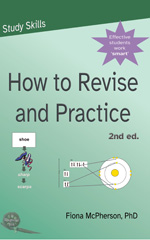Stretching your mind
I recently reported on a finding that older adults whose life-space narrowed to their immediate home were significantly more likely to have a faster rate of global cognitive decline or develop mild cognitive impairment or Alzheimer’s.
Now there are some obvious correlates of being house-bound vs feeling able to travel out of town (such as physical disability), but this relationship between cognitive decline and confined life-space remained after such factors were taken into account. The association is thought to be related to social and mental stimulation.
But I think this association also points to something more specific: the importance of distance, and difference. Different ways of thinking; different contexts. Information (in the broadest sense of the word) that stretches your mind, that gets you out of the grooves of your familiar thoughts.
Last year I reported on a study looking at creativity in problem-solving. That study found that multicultural experiences help you become more creative in solving problems. In particular, creativity was best helped by being reminded of what you’d learned about the underlying meaning or function of behaviors in the multicultural context. In other words, what was important was truly trying to understand behavior that’s very different from your own.
While travelling undoubtedly helps, you don’t need to go to a distant place to learn about different cultures. You can read about them; you can watch movies; you can listen to other people talk about what they know. And if you have those experiences, you can then think about them at any time.
A vital tool in tackling cognitive decline in old age (including the more extreme events of mild cognitive impairment and dementia) is cognitive reserve. Cognitive reserve means that your brain can take more damage before it has noticeable effects. Many people have died with advanced Alzheimer’s pathology in their brain who showed no signs of dementia in life!
Cognitive reserve is most often associated with education, but it is also associated with occupation, bilingualism, and perhaps even music. What it comes down to is this: the more redundancy in your brain, the wider and denser the networks, the more able your brain will be to find new paths for old actions, if the old paths are damaged.
The finding that life-space can affect cognitive decline is also a reminder that we are minds in bodies. I have reported on a number of examples of what is called embodied cognition (the benefits of gesture for memory are one example of this). It’s a good general principle to bear in mind — if you fake enjoyment, you may well come to feel it; if you look at the distant hills or over the sea, your mind may think distant thoughts; if you write out your worries, the weight of them on your mind may well lighten.
I made reference to bilingualism. There have been several studies now, that point to the long-term benefits of bilingualism for fighting cognitive decline and dementia. But if you are monolingual, don’t despair. You may never achieve the fluency with another language that you would have if you’d learned it earlier in life, but it’s never too late to gain some benefit! If you feel that learning a new language is beyond you, then you’re thinking of it in the wrong way.
Learning a language is not an either-or task; you don’t have to achieve near-native fluency for there to be a point. If there’s a language you’ve always yearned to know, or a culture you’ve always been interested in, dabble. There are so many resources on the Web nowadays; there has never been a better time to learn a language! You could dabble in a language because you’re interested in a culture, or you could enhance your language learning by learning a little about an associated culture.
And don’t forget that music and math are languages too. It may be too late to become a cello virtuoso, but it’s never too late to learn a musical instrument for your own pleasure. Or if that’s not to your taste, take a music appreciation class, and enrich your understanding of the language of music.
Similarly with math: there’s a thriving little world of “math for fun” out there. Go beyond Sudoku to the world of math puzzles and games and quirky facts.
Perhaps even dance should be included in this. I have heard dance described as a language, and there has been some suggestion that dancing seems to be a physical pursuit of particular cognitive benefit for older adults.
This is not simply about ‘stimulation’. It’s about making new and flexible networks. Remember my recent report on learning speed and flexible networks? The fastest learners were those whose brains showed more flexibility during learning, with different areas of the brain being linked with different regions at different times. The key to that, I suggest, is learning and thinking about things that require your brain to forge many new paths, with speed and distance being positive attributes that you should seek out (music and dance for speed, perhaps; languages and travel for distance).
Interestingly, research into brain development has found that, as a child grows to adulthood, the brain switches from an organization based on local networks based on physical proximity to long-distance networks based on functionality. It would be interesting to know if seniors with cognitive impairment show a shrinking in their networks. Research has shown that the aging brain does tend to show reduced functional connectivity in certain high-level networks, and this connectivity can be improved with regular aerobic exercise, leading to cognitive improvement.
Don’t disdain the benefits of simply daydreaming in your armchair! Daydreaming has been found to activate areas of the brain associated with complex problem-solving, and it’s been speculated that mind wandering evokes a unique mental state that allows otherwise opposing networks to work in cooperation. Daydreaming about a more distant place has also been found to impair memory for recently learned words more than if the daydreaming concerned a closer place — a context effect that demonstrates that you can create distance effects in the privacy of your own mind, without having to venture to distant lands.
I’m not saying that such daydreaming has all the benefits of actually going forth and meeting people, seeing new sights. Watching someone practice helps you learn a skill, but it’s not as good as practicing yourself. But the point is, whatever your circumstances, there is plenty you can do to stretch your mind. Why not find yourself a travel book, and get started!

